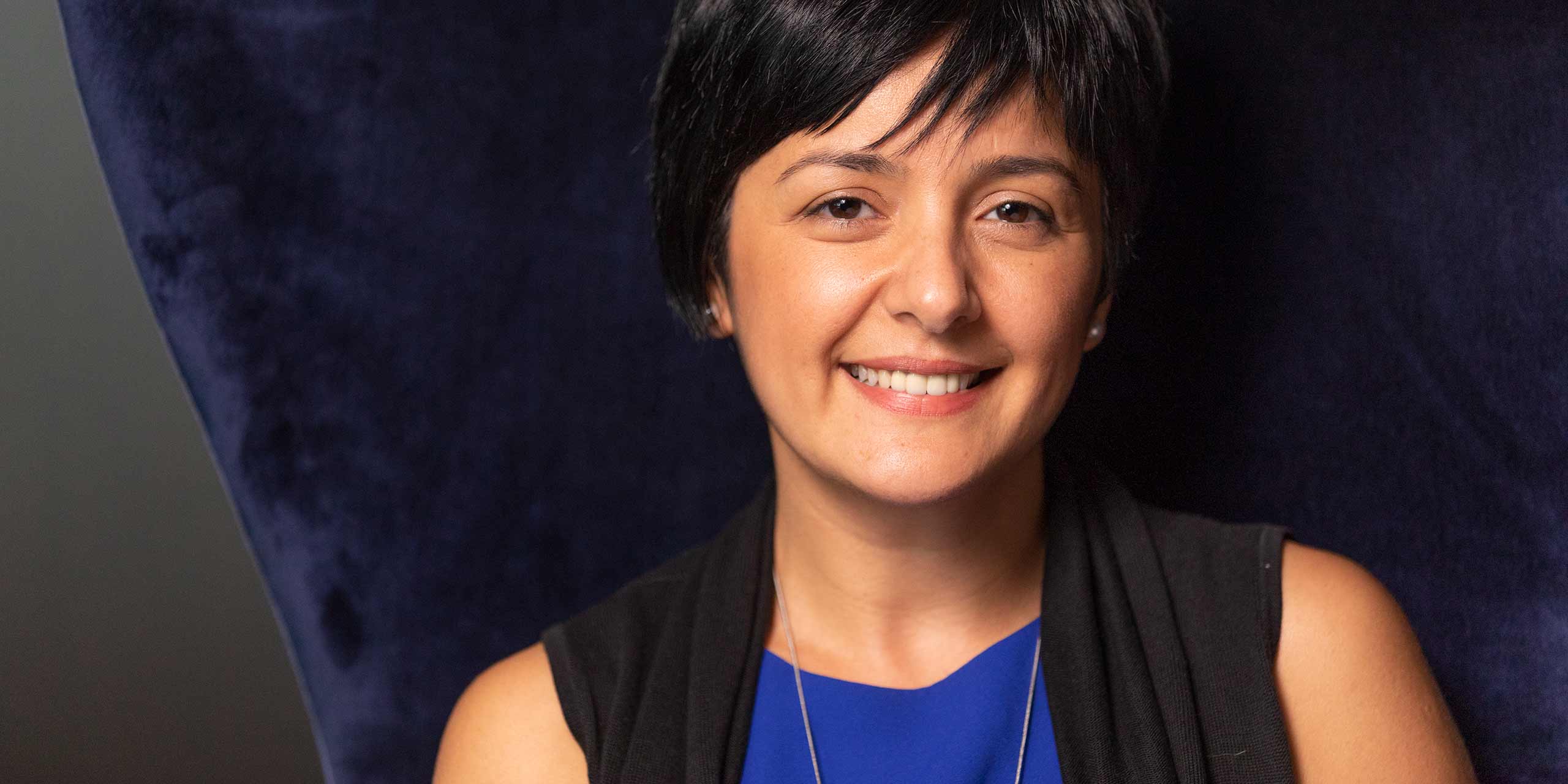Florida Atlantic University math professor Burcu Karabina vividly remembers the first time she taught mathematics to liberal arts majors. Specifically, she remembers the unsettling silence that seemed to envelop the classroom.
“In a typical math class for liberal arts majors, there is one instructor, a podium and rows of seats with about 100 students,” she explains. “The first time I taught this course, I’m delivering the content and I ask them, ‘Do you have any questions?’ Of course they all have questions, but I didn’t see a single show of hands.”
Karabina was, at the time, a recent graduate of the University of Waterloo. She had taught some online math courses there but had never quite experienced something of this magnitude in a classroom. She wasn’t eager to spend her workdays talking to a silent room. “I felt like there was a big wall between me and my students. And I thought: I need to punch a hole in this wall. I need to get there and help them.”
Watch the full Innovative Profs series on YouTube (and don’t forget to subscribe)
Karabina diagnosed the problem as math anxiety, a phenomenon that has been deeply researched and well-documented—and one that is alarmingly common. Studies show that 67 percent of college students experience high levels of anxiety in a math course. One 2012 study (and there are many other studies just like it) examined the attitudes and performance of 193 students in a course entitled Research Design, and concluded that math course anxiety is the most influential factor in explaining low exam grades.
But math anxiety isn’t uniquely a campus phenomenon; it starts early in elementary school. “Students come to college with years of anxiety, and they avoid their math courses,” says Karabina. The problem is that students in liberal arts have to take a math course to be able to graduate, and the longer they wait, the higher the stakes. “They don’t take it until the last year, and then they’re nervous because if they fail they can’t graduate. So they always see math courses as a roadblock to their success.”
Math refusal and social acceptability
Math anxiety is also culturally condoned—or, at the very least, its symptoms and manifestations are widely tolerated, with blind eyes turned to any sense that there might be a problem. “It is socially acceptable to say, ‘I’m no good at math,’ and get away with it,” Karabina says. That, in turn, encourages people to avoid math for years, which only compounds the problem.
“Math anxiety is content anxiety,” Karabina explains. “It’s not just related to their peers or to their surroundings. They’ll feel the symptoms anytime they have to deal with the numbers, even in their daily life.”
All of these things contribute to the deafening silence Karabina faced in the classroom. All her students shared the same fears and anxieties, yet each was unable to say a word. It was as though her math classes doubled as the most woefully ineffective support groups imaginable.
And so the great irony of Karabina’s solution is that, in order to help her liberal arts students overcome math anxiety, she transformed herself into a language professor. “Mathematics is a primary language of science,” she says. “I tell my students, ‘this is a whole new vocabulary. You need to practice it.’ When I first started teaching math for liberal arts, my daughter was three years old. I told them, ‘I have a toddler at home. She talks all day long. Guess why? She’s learning a new language. She’s practicing. You just have to do the same.’”
“I tell them math is a very precise language. That’s why it’s cognitively a little bit more difficult for some people to comprehend, which is perfectly okay. But math on its own is a different language, so you should be able to speak mathematics. And I teach them how to speak little by little.”
The best way to overcome math anxiety is to do math.
She does so, in part, by having students recall snippets from lessons long past. “On a typical day, I start the course with a discussion about a very basic math concept, like sets. Everybody knows there are sets.” But when she asks for a definition of sets, no one can answer. She patiently asks them to help her pull together the pieces by telling her what they know. And once they’ve cobbled the definition together, she goes over a few examples. “And then I say, ‘now it’s your turn.’ Because the best way to overcome math anxiety is to do math.”
Karabina uses classroom response systems to get students practicing mathematics in class, which allows her to wander the halls and identify the students whose anxiety is most acute. “I tell them, ‘I’m not testing you, I’m not timing anything. I’m just encouraging you to give it a try, and if you do it right, you can maybe help the person next to you.’”
Three months of talking the language of math eventually pays off. “It’s really nice to see how they build confidence in solving problems, how they feel confident with asking for help if they need to. And then it’s really nice to see my students engaged in a math conversation at the end of the semester. After three months of adventure, they can speak math. And then some of my students receive their first As in their math courses, and they’re so happy.”


